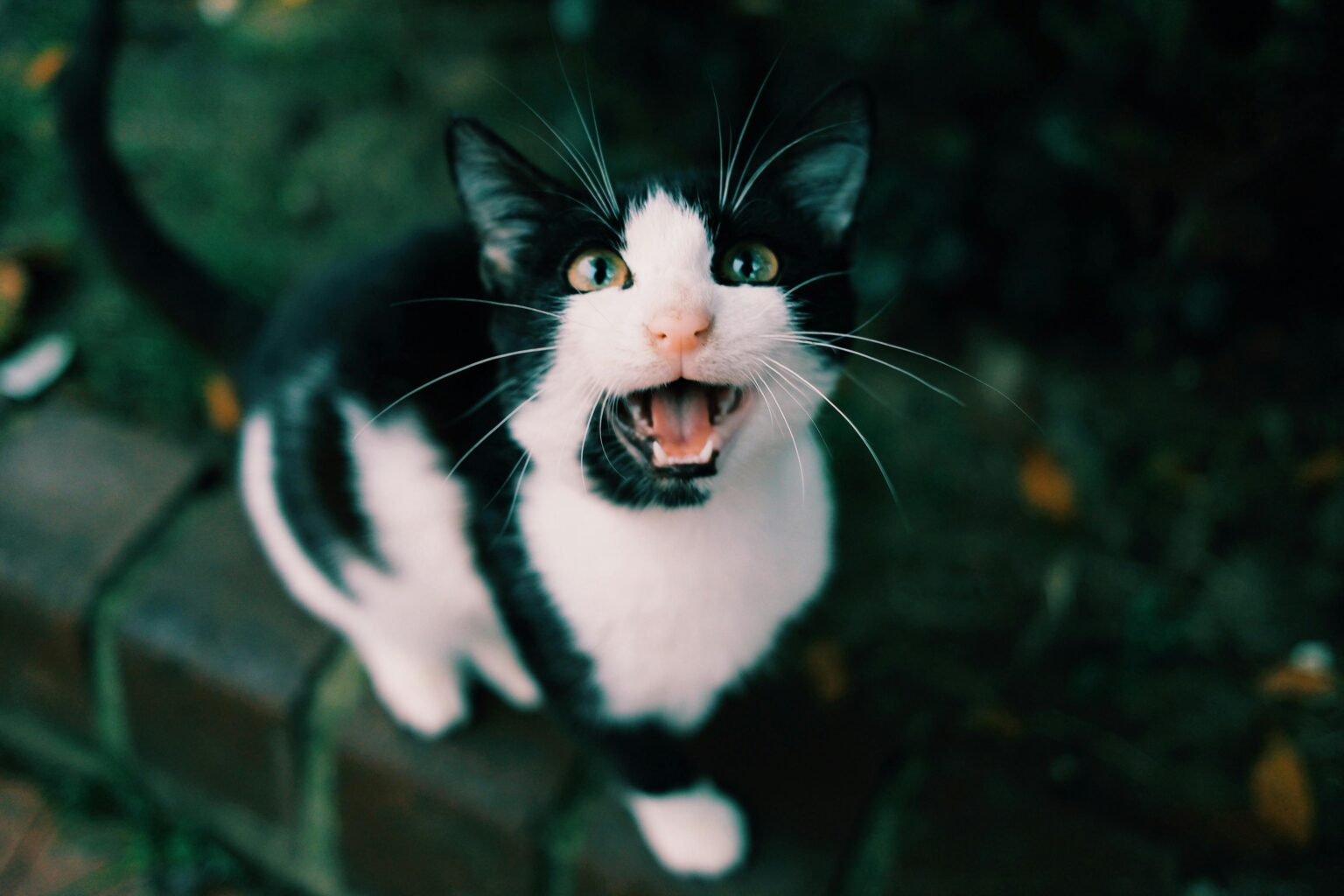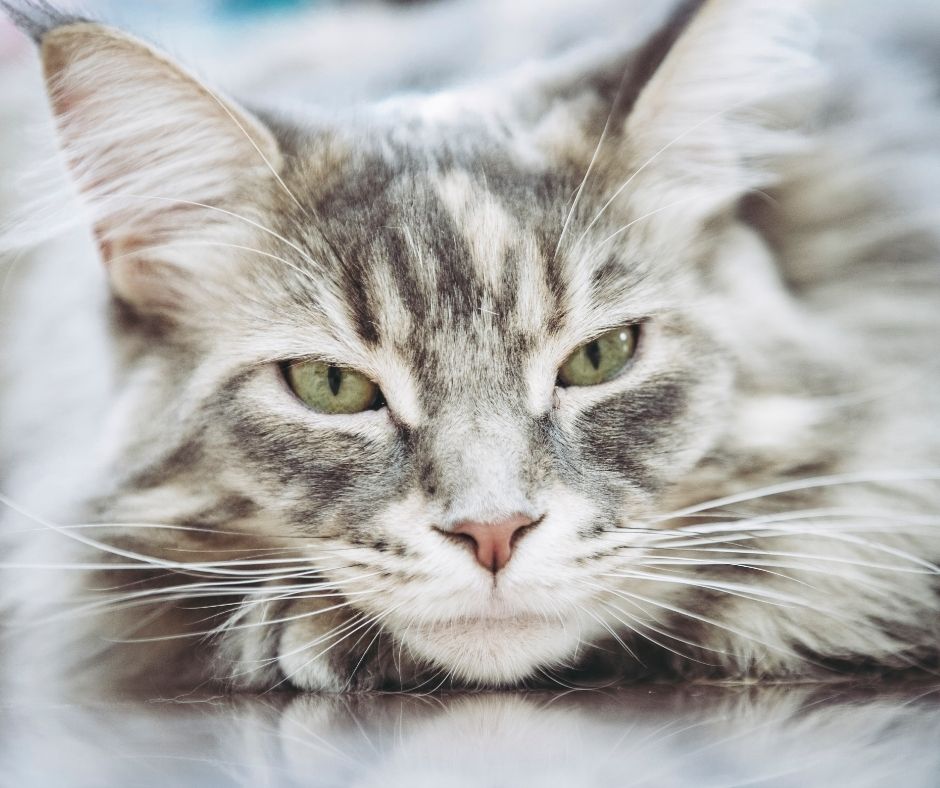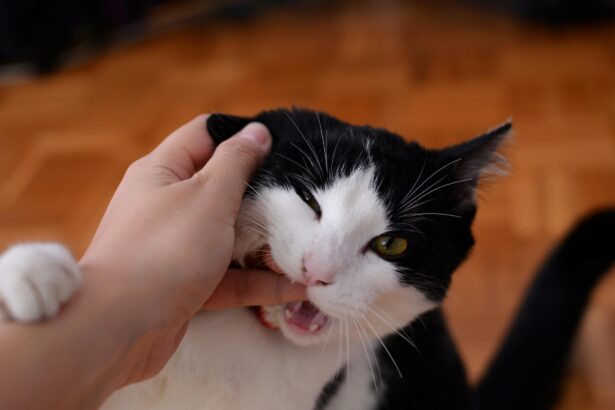If you’ve ever wondered why your cat meows, you’re not alone. Meowing may sound like simple noises to us humans, but to cats it’s a complex form of communication that can convey a multitude of emotions and needs. In this article, we’ll explore this vast landscape of meows, their causes and how to interpret them to foster a better understanding and connection with your cat.
- The different reasons why a cat meows
- Types of cat meows: How to recognize them?
- Feline communication beyond the meow
- How do you react to your cat’s meowing?
- What to do when your cat meows for attention
- When to consult a vet
- How to promote good communication with your cat
- Knowing your cat by its meow – An essential asset
The different reasons why a cat meows
There are a multitude of reasons why cats meow. These reasons may depend on the context, the cat’s age, its state of health and many other factors. Let’s take a look at the most common.
Meowing for attention
It’s perhaps the most obvious reason why cats meow, but it’s also one of the most fundamental. Cats are social creatures who need interaction to stay happy and healthy. So they may be meowing simply because they want your attention. This could mean they want to play, be petted, or simply be in your company. Cats may also meow to protest a change in their environment or to express boredom.
Meows to express hunger or thirst
Another frequent trigger for meowing is hunger or thirst. As mentioned in our article on cat feeding, cats are opportunists when it comes to food. They’ll meow if their bowl is empty, no matter how much food they’ve already eaten during the day.
Meowing to signal discomfort or pain
It’s important to understand that cats are masters at hiding their pain or discomfort. If their behavior changes abruptly, or if they start meowing more than usual, it may be a sign that they’re not feeling well. In such cases, it is advisable to consult a veterinarian to determine what might be causing their discomfort.
While there are many other reasons why a cat might meow, the above covers some of the most common motivations. Learning to recognize your cat’s specific meows is essential to understanding its unique needs.
Types of cat meows: How to recognize them?
More than just sounds, cat meows can vary considerably in meaning. Every cat has unique “phrasings”; nevertheless, here are some common types of meows and their general interpretations:
Short, abrupt meows
These meows, often brief and repetitive, generally signal a request for attention or surprise. If your cat meows like this after seeing you come home from work, for example, it’s probably just an expression of excitement or affection.
Long meows
Long meows, usually drawn out and melodious, are often a sign of dissatisfaction or frustration. For example, he may express his dissatisfaction with a closed door that prevents access to the outside, or even his annoyance with a dirty litter box.
Low-pitched meows
A low, deep meow is often associated with aggression or fear. This type of meowing is frequently observed during territorial disputes between cats, or when the cat feels threatened in some way. In such cases, it’s best to move the cat away from the source of the problem.
To correctly decode the different types of meowing, you need to listen carefully to your cat and observe its behavior at the same time. Over time, you’ll come to understand its unique language.
Feline communication beyond the meow
Meowing is only a small part of feline communication. Understanding your cat requires careful attention and observation of a whole range of non-verbal signals, including the following noises:
The purring
Purring is a sign of contentment in cats, although there are exceptions. For example, some cats may purr when stressed or anxious. Familiarizing yourself with the different “kinds” of purr your cat makes will help you understand its emotional state.
Leafing or whistling
Leafing, growling and hissing are all signs that your cat is agitated, frightened or aggressive. It’s best to leave your cat alone if it makes these sounds, as it’s probably under stress or anxious.
Friction marking
Another common behavior is rubbing the cheeks and head against objects or people. This gesture, often accompanied by a warm meow, is a sign of affection but also a way for the cat to mark its territory.
How do you react to your cat’s meowing?
Knowing how to recognize the different types of meowing and understand their causes is essential to meeting your cat’s needs. Here are some tips on how to respond to common scenarios:
What to do when your cat meows for attention
If your cat meows to attract attention, try to understand his request. Perhaps he wants to play or be stroked. The most important thing is to respect the fact that your cat is a living being with its own needs and desires, and to give it the attention and care it deserves.
When to consult a vet
If you notice a sudden change in your cat’s behavior or meowing habits, it’s best to consult a vet. Your cat could have a medical problem, and a professional examination is the best way to determine this.
How to promote good communication with your cat
Good communication with your cat requires patience and understanding. By paying attention to your cat’s meows, behaviors and habits, you can learn to understand its needs. Understanding is the key to a strong, lasting relationship with your four-legged friend.
Knowing your cat by its meow – An essential asset
In conclusion, understanding why and when your cat meows is not only an essential asset in ensuring his well-being, it’s also an opportunity to deepen your relationship with him. The more you understand the nuances of his meows, the better you’ll be able to respond to his needs and offer him the support, love and comfort he deserves.
So yes: the first “serious” meow was a little joke! 😅








